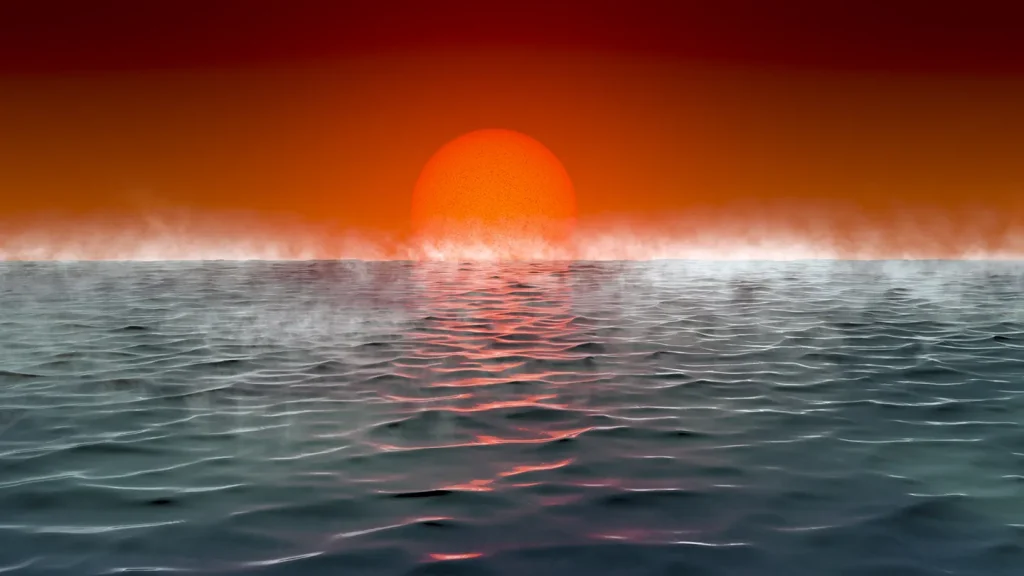A hycean world is a type of exoplanet with an ocean-covered surface and an atmosphere dominated by molecular hydrogen (H2), with the environmental conditions in the ocean similar to those suitable for life in Earth’s oceans.
The concept of hycean worlds was first theorized in 2021 (Madhusudhan et al. 2021) motivated by the possibility of liquid water oceans on the exoplanet K2-18 b (Madhusudhan et al. 2020). The name “hycean” is a portmanteau of “hydrogen” and “ocean”, because these planets are defined by their hydrogen-rich atmospheres overlying a liquid water ocean. Hycean worlds are expected to significantly expand and accelerate the search for life beyond Earth.

The bulk properties of hycean worlds are expected to make them more conducive for astronomical observations in the search for habitable conditions and life compared to Earth-like rocky planets. Hycean planets can be significantly larger (up to 2.6 times Earth size) than Earth-like planets of comparable mass. The H2-rich atmospheres imply that their atmospheres are also more extended than those of rocky planets, which are expected to be dominated by heavier molecules such as N2, O2, or CO2, as seen for terrestrial planets in the solar system.
The combination of larger planet sizes and more extended atmospheres makes these planets more accessible to astronomical observations of their atmospheres. As such hycean worlds offer a promising new avenue in the search for life on exoplanets with current observational facilities.
Receive Email Updates
As we add news and content to the website, we'll email you to keep you updated!


